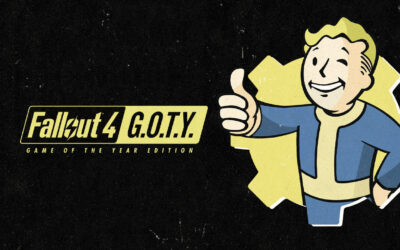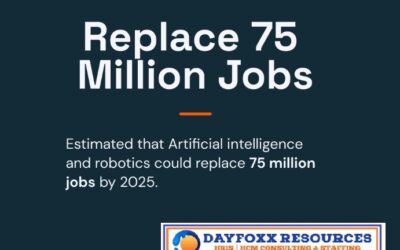Since Human Resources, in itself, is not a revenue-generating cost center, the goal has been to keep the department small as possible. Working in the HRIS consulting field, I’m surprised to encounter so many mid-size enterprises void of any HRIS representation in their ranks, whatsoever. Eventually, you develop a sense that the concept of Human Resources Information Systems seems something of mystery to these organizations, who do not see the value in having HRIS personnel on staff or available for special projects.
In addition to the primary HRIS system, 70% of HR employees say they use three to six apps just to complete a single task. This app overload erodes productivity and creates a frustrating experience for HR professionals who are looking for a more streamlined and efficient way to handle routine processes. Many are poorly designed, disjointed and glitchy — if they work at all. This adds to the inefficiency and frustration, not to mention the money wasted on software that doesn’t work as was intended.
Let’s explore some of the reasons driving dissatisfaction of your current HRIS program.
Top 4 Reasons Why You Hate Your Current HRIS System
1. Lack of Formal HRIS Representation
Due to not having a dedicated HRIS Analyst assigned, HRIS responsibilities will usually be entwined into someone else’s role in HR, such as management, benefits, compensation, or payroll. Has this employee previously been in a formal HRIS capacity and just happened to migrate back into HR operations? No. A manager sat down with them and advised them acquiring the HRIS function was just going to be something added in addition to what they were currently doing, without any formal training or background. Unfortunately, this never ends well.
Why doesn’t it end well?
Because is an HRIS system is vast, encompassing every practice area of HR, often encroaching into the proximity of Finance/Accounting, Legal, and IT. It literally takes years to begin to understand the system elements of:
- Gap analysis
- System evaluation
- Defining business requirements
- Translating these requirements into actionable solutions
- Research
- Troubleshooting
- Configuration
- Testing
- Integration
- Implementation
- Understanding how the end user in HR interacts with an HRIS
- Being informed and staying ahead of the functionality evolution of HRIS systems
When employees working in a dual role of HRIS and their main function in HR, the knowledge gap is clearly visible, falling far below that of your basic, junior HRIS analyst. It’s a burden to their bandwidth, not their career trajectory!
A company not providing an HRIS technical resource to escalate issues or to field questions results in a massive disservice to all HRIS users in an organization, equating to low morale, poor time management, mistakes and errors, even attributing to higher turnover.
2. Workarounds
As opposed to investing in HRIS staff to best leverage system capabilities, low-functioning HR Generalists are brought in to perform manual tasks and workarounds. Some examples would be data entry into 3rd party benefits vendor websites or SFTP file maintenance – due to no integrations – or manual elements of onboarding, HR transactional events, and employee self-service.
Another area is reporting. Even from one HRIS system to another, reporting & analytics requires a deep understanding of coding, tables, field joining, and field mapping. Often staff will rely on incomplete reports amongst already existing reports in the HRIS system’s reports library — and then attempt to collate them into one report — as opposed to consolidating these reports into one within the HRIS, or using a data visualization tool like Power BI or Tableau.
At the end of the day, the amount of off-system activity begins to mount – often seen in utilizing 3rd party log-ins and the high volume of Excel, Word, and One Note documents — for which many functions could be leveraged inside of your HRIS. Some organizations do not even have workers with an intermediate knowledge of Excel, requiring them to spend hours to complete a simple spreadsheet that would take 15 – 20 minutes for someone else.
3. We used ______ as our HRIS in the last company I worked for! It was amazing!
It was amazing. That previous company brought in skilled HRIS consultants during implementation, had full-time HRIS analysts head count, and was committed to the continuous optimization of their HRIS system from a budgetary perspective. Plus, it was mandatory that the team completed HRIS training and they communicated system issues to HRIS, as they occurred.
The previous company successfully matched the right HRIS solution for their needs. It was practical and scalable for their industry, size, geography, and scope.
While this is the ideal goal for many companies, it rarely occurs. Users become very disenchanted with their processes, workflows, and just the basic integrity of the data — leading to frustration and the belief there is a “better system” elsewhere. But, when it works, a former employee will happily share their experiences to every new employer!
4. HR Service Delivery
There has been very little change in how HR allocates its time. It still spends the same amount of time performing its administrative activities as it did 20 years ago. As a result, HR often fails to engage in important issues related to business strategy, organizational change, organization design, sustainability, and a whole host of other important organizational effectiveness issues.
Now add user frustrations with log-ins, data errors, vacation accrual, inaccurate job titles, payroll incongruity, tax discrepancies, careless benefits administration, buggy merit/bonus calculations, incorrect surnames and address, etc. — and suddenly it appears obvious that HR cannot do anything right when it comes to service delivery to the business.
The Bottom Line
From an HRIS perspective, none of these issues are necessary. The right HRIS consultant can come in, hit the ground running, resolving a lot of bottlenecked issues within a few short months. Contact Dayfoxx Resources today. Let us prove it to you.












0 Comments